
ISBN 978-0-9576506-8-8
Written by Gareth Evans
Photography, Diagrams and Cover design by Gareth Evans
Copyright 2014 by Intuition Publications
International Copyright Secured. All rights reserved. No part of this publication may be reproduced in any form or by any means without the prior written permission of the publisher
Welcome to Guitar Chords for Beginners. This book will take you through all of the chords you will need to know as a beginner and more. Some chords are approached as a gradual process making them easier to learn, while others are given with more than one way of fingering. Getting techniques correct from the start is important so advice is given on technique to a higher extent than average. Some parts of the book refer to and are linked to other parts, to return to your previous location just use the back button on your eReader. All of the chords are exampled with downloadable audio (the link to the free audio is given ).
To make sure your guitar is in tune a free online guide can be found on the following website www.guitar-book.com
How to use Fret-board Diagrams
Fret-board diagrams provide a graphical representation of the fret-board. In the following example the parts and their functions are labelled.
.jpg)
The fingers are numbered as shown in the picture below left. The fret-board diagram above indicates that you would use the index (1) and middle (2) finger for the chord. As shown on the picture below right

Technical Issues for Beginners
Ironically, the first chords that are often taught to beginners arent necessarily the easiest to play. On a piano, for example, the keys are arranged in a linear fashion so the difficulty of playing chords will tend to match the complexity of the chord. On the guitar however, the difficulty of playing chords depends on how they happen to be arranged on the fret-board. Take for instance an A9sus4 chord (thats A9 suspended 4th). It may sound a bit scary by name but here it is (below left)

Pretty easy because its all open strings apart from the low E. Play all 6 strings open and you have an A9sus4/E chord as shown to its right (A9 suspended 4th over E). Possibly the easiest chord there is to play. On the other hand, C major (as shown below), a chord that is often one of the first to be taught, can be difficult for a total beginner...

The point Im trying to make here is not to be misled or disheartened by this apparent mismatch of difficulty. It can be beneficial where possible, to deal with chords like C in stages, as we will see later on.
Open chords means chords with open strings within them. These chords, often being down the bottom of the fret-board, mean that for the notes that are fretted theres a little more resistance when pushing the string down due to being near the nut that holds the strings up. If you play a note on the 1st fret of any string, then play a note further up the fret-board (say on the 9th fret) you might notice there is less resistance from the string on the 9th fret and it is easier to push down. For a more experienced guitar player this difference can be negligible yet for a total beginner it can be noticeable. This is why it can be best for the action of your guitar (the distance from the strings to the frets) to be as low as possible.
Flexibility
Disclaimer: The information provided in this section is intended for information purposes only. You must not rely on it as an alternative to medical advice from your doctor or other professional healthcare provider. You should consult with a doctor or healthcare professional before starting any exercise, or if you have or suspect you might have a health problem.
One common problem for beginners is being able to stretch their hand and fingers to be able to fret chords. A beginner can find that hand postures seem unnatural and tricky contortions. This is a reason why stretching can be important for beginners, even as much as the practise itself. Below are a couple of basic relevant stretches. Dont try to do them any further than you feel is comfortable. If you cant stretch as far as shown in the illustrations this is not a problem at all; stretching within your limits is more effective.
Forearm Extensor Stretch - Hold an arm out straight in front of you and bend the wrist and fingers towards you using the other hand. Hold for 3 to 5 seconds and repeat 6 to 10 times.

Flexor Stretch- Hold the arm straight and start with the palm facing downwards then bend your fingers and wrist back. Hold for 3 to 5 seconds and repeat 6 to 10 times.

Techniques
The following is an explanation of fretting hand technique for when playing chords. The two chords used in the picture examples are C major and D major to demonstrate overall technique. You dont necessarily have to play them now although they are dealt with soon. This section can be referred to when learning all chords.

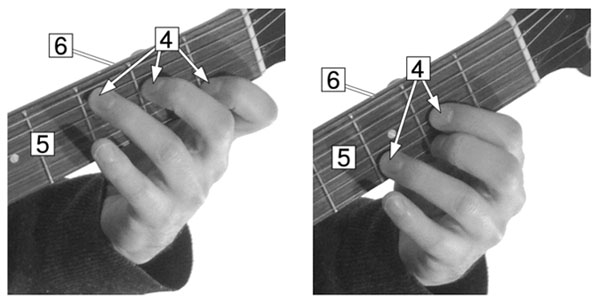
1. The posture of the hand affects the fingers. There should be at least a small amount of space between the bottom of the neck and the palm of the hand. The elevation of the fingers over the fret-board should allow the best angle of approach for their tips onto the frets.
2. All the joints of the fingers including knuckle joints should be bent at least slightly so that the control is in the ligaments. Relying on the bone joints bending back and locking for support might offer more strength and seem easier initially, but lacks control and disallows fine adjustments you could otherwise make with the ligaments. In the photo example below, the 3rd and 2nd fingers are incorrectly bent back into their upper joints.
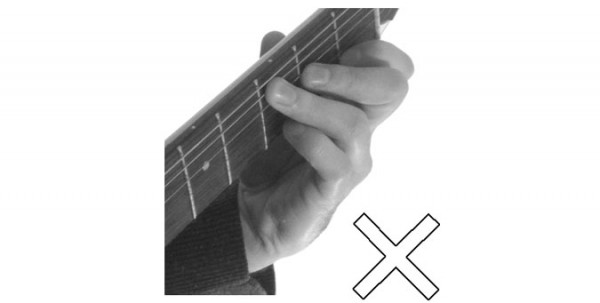
3. Press down with the bone at the tip of the finger. With practise the fingertips will start to harden. Soft flesh on beginners fingertips can envelope the strings giving more surface area contact (particularly if you have large fingers) and therefore touch other strings which is undesirable. Once the fingertips start to harden up this should become less of a problem.
Next page











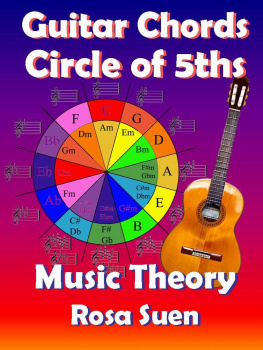
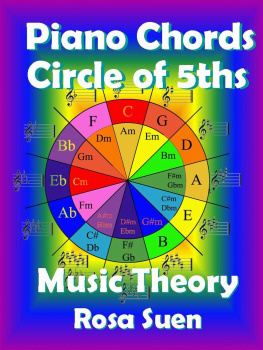




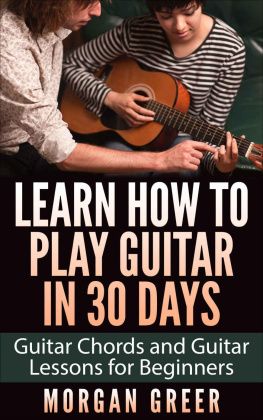

.jpg)







